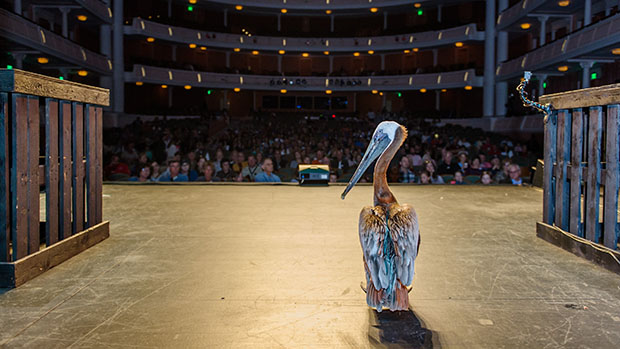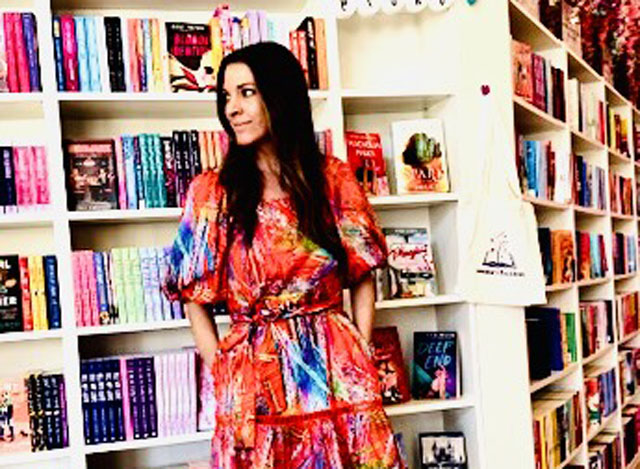Stitched with Love
05 Jan 2020
The artisans behind the iconic Sweetgrass baskets
By Jenny Peterson

Edith Coakley remembers selling homemade sweetgrass baskets as a child for 25 cents each on the side of Hwy. 17 in Mt. Pleasant in the 1950s.
Today, as cars fly past, it’s impossible to keep the same routine for selling the crafts.
But the tradition for creating the hand-woven baskets has remained the same – right down to the four-inch nail bones that resemble a dull knife and scissors as the only tools used to make the historic woven craft.
It's been passed down from generations of African Americans since the era of slavery, originally used for winnowing rice.
It takes roughly 40-60 hours to make one basket, depending on how complicated the design. When you factor in designs with handles, tops and “elephant ears”—sweetgrass molded like a ribbon on the outside of the basket— it’s well over a week of hard handiwork.
Artists then haul their baskets to be sold to the historic Charleston Market downtown on Wednesday, Thursdays and Fridays.
Edith’s adult daughter, Gwen Coakley Hicks, is the family's next generation to learn the craft. The family has lived in Mt. Pleasant for generations, enjoying playful relationships during basket weaving, passing a half-made basket back and forth, each taking turns crafting another layer.
The family members recently discussed their craft at Timbers Kiawah Ocean Club & Residences.
The resort’s interior decorator, Joni Vanderslice of J. Banks Design of Hilton Head, contracted with the family for more than two dozen baskets to decorate the residences, creating an authentic, local touch.
Andrea Cayetano-Jefferson, Edith’s niece, was up for the task and worked to produce the baskets with her mother, Martha Cayetano-Howard, and aunts Edith Coakley and Linda Moultire.
While the circular pattern is synonymous with South Carolina—and is even identified as the official state craft—each basket weaver has a signature style.
“I can definitely tell the difference in design between everyone in our family,” said Andrea.
Although each basket is round and layered, amazingly, there is no pattern-making. The idea might start out as a simple bread basket, but then transforms into a decorative fan, high-sided fruit basket or trivet.
The women weave their baskets using a mixture of local long-needle pine, bulrush and sweetgrass.
Development has changed how and where they harvest the native wild bulrush and sweetgrass each summer. The side of dirt roads has almost become an extinct option, and sweetgrass from a garden store isn’t the same; Andrea says it’s rougher, harder on the hands and harder to weave into tight coils.
But still they persevere, harvesting in the Lowcountry and sitting for hours to carefully weave the fine threads.
Sweetgrass baskets are largely a female craft; Edith says that males in their household were not encouraged to “sit all day and make baskets.”
It’s tedious work, but centers around family, and longtime preservers of the craft enjoy it wholeheartedly.
The women have lively conversations while they weave, sitting around a living room with a towel on their laps to catch loose grass, playfully joking with one another about their weaving style and recalling when they wove their first basket.
Children were traditionally tasked with “starting the basket,” which is the small circular center, tightly woven like the beginning of a dreamcatcher.
While there are concerns that the younger generation doesn’t have the interest in or need for weaving and selling along the side of the road to keep the tradition going, the foothold for the craft remains alive and well with the matriarchs who preserve the tradition.
They have embraced the younger generation and their new twists, like creating delicate sweetgrass jewelry. And they are happy to talk about their craft with curious shoppers at the Charleston Market and beyond.
Sweetgrass baskets by Andrea Cayetano and the Graddick Sisters are sold at the Historic Charleston City Market on Wednesdays, Thursdays and Fridays in building C, Space 42. For bulk or special orders, email gwenchicks4@gmail.com.












